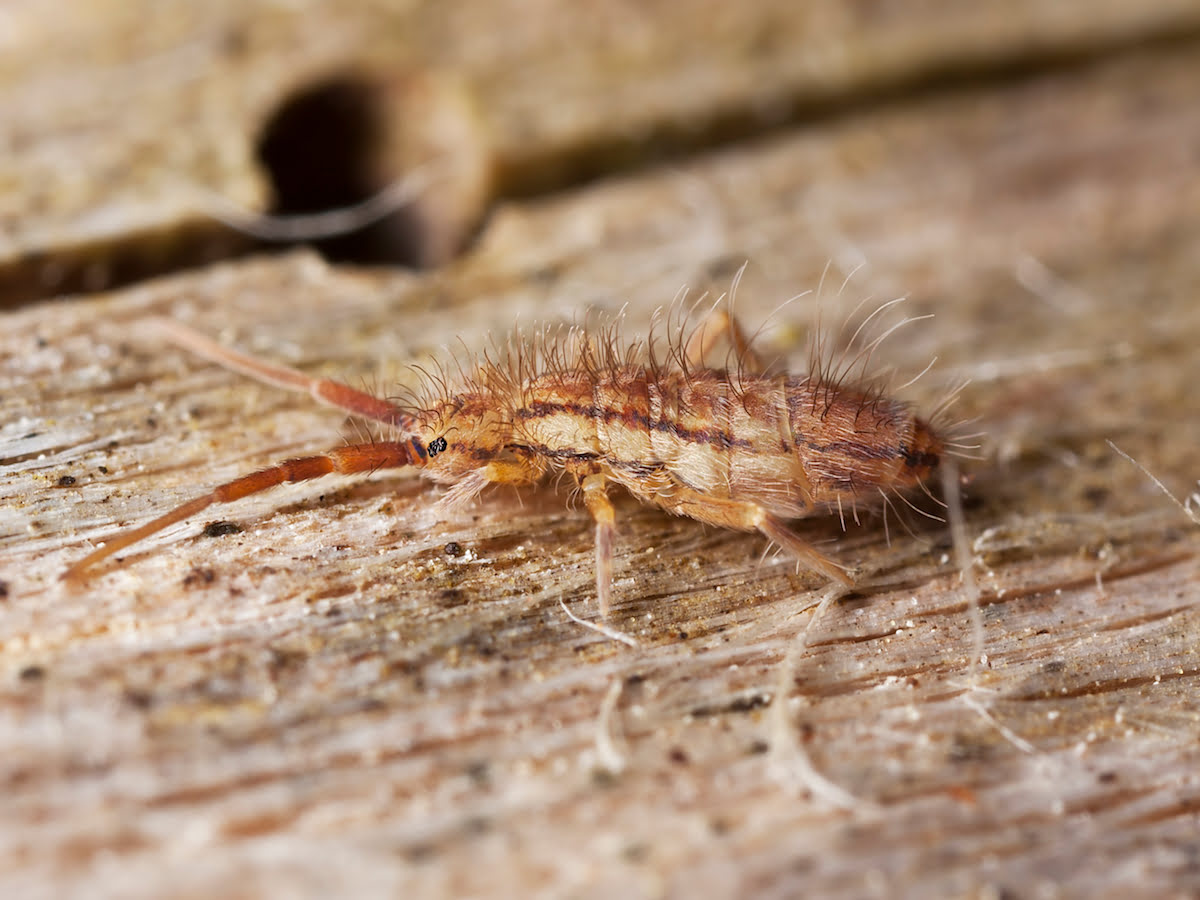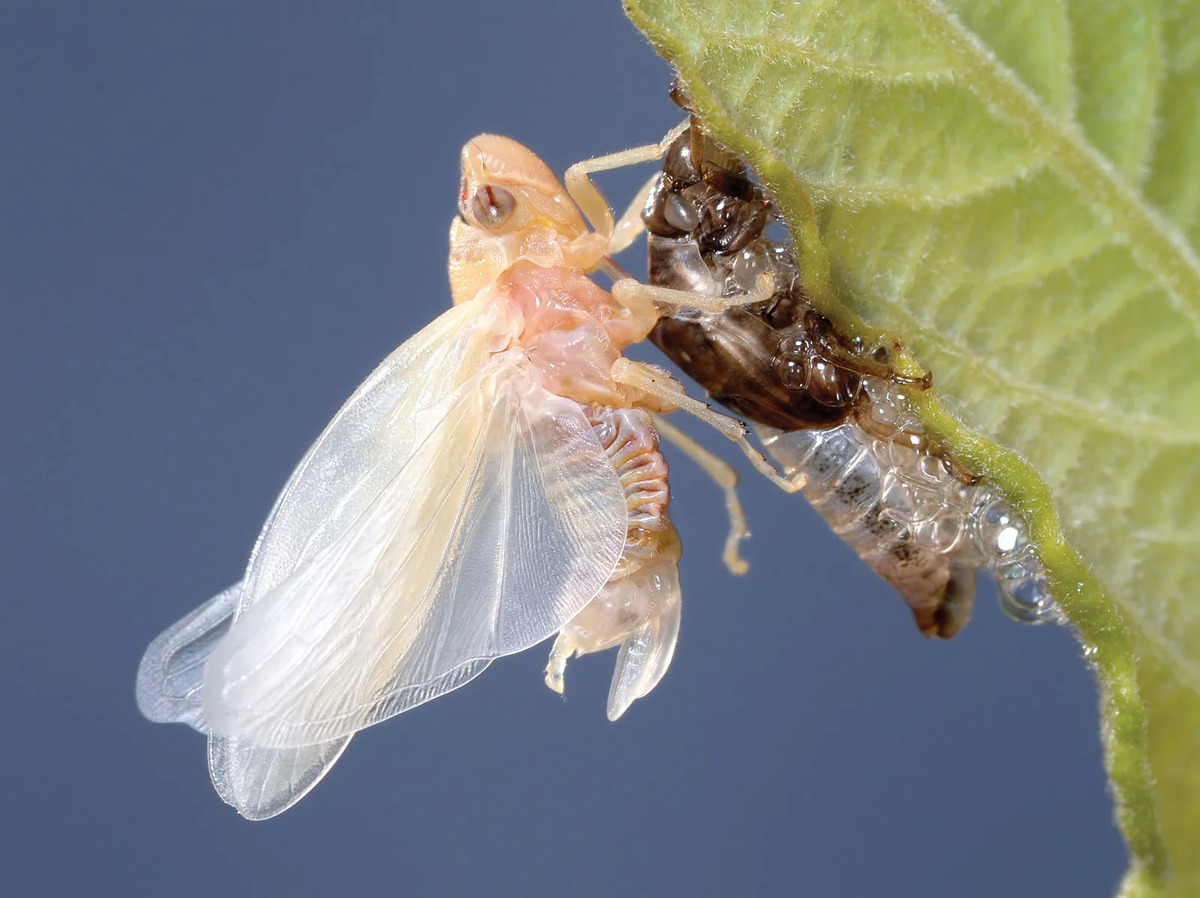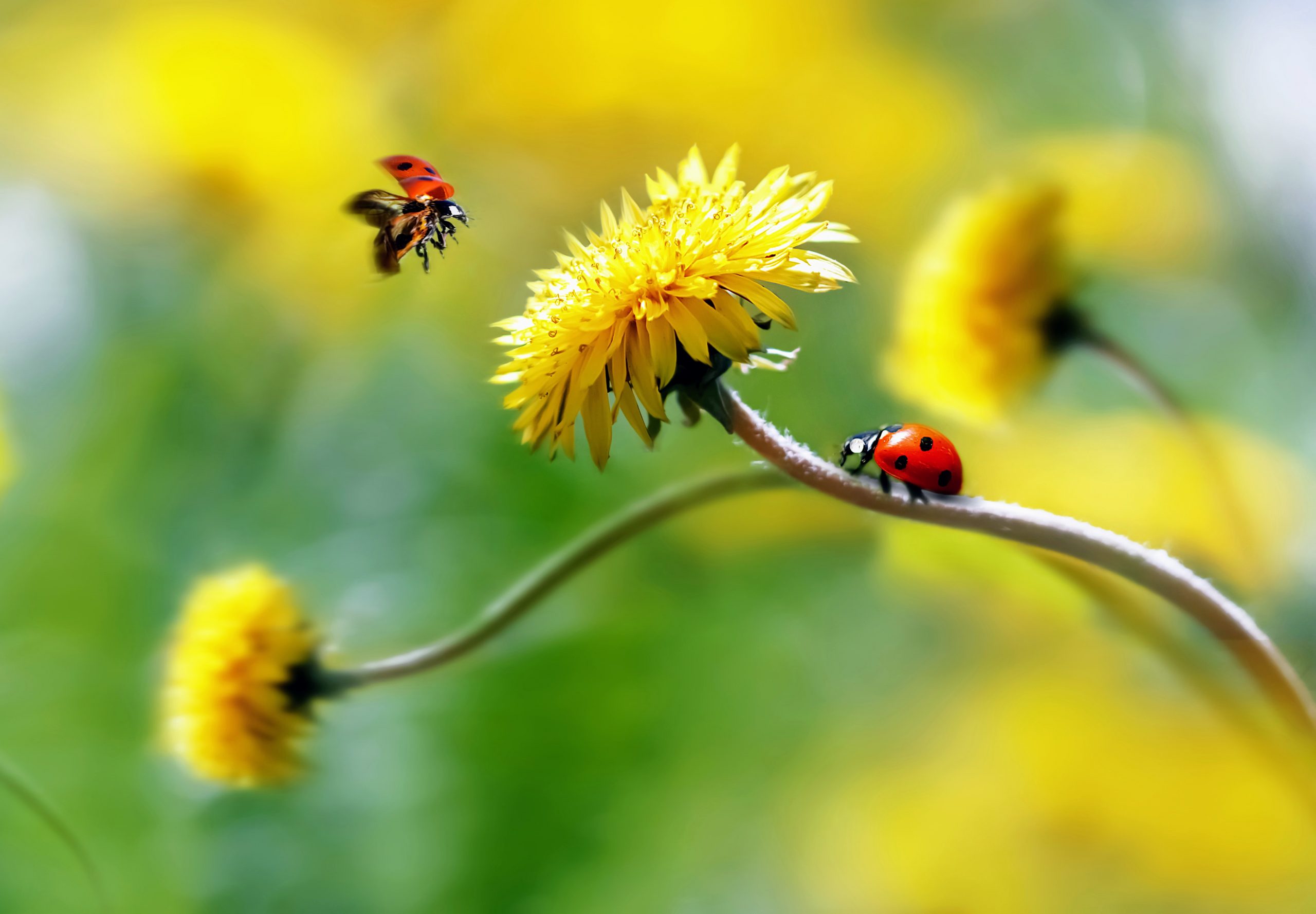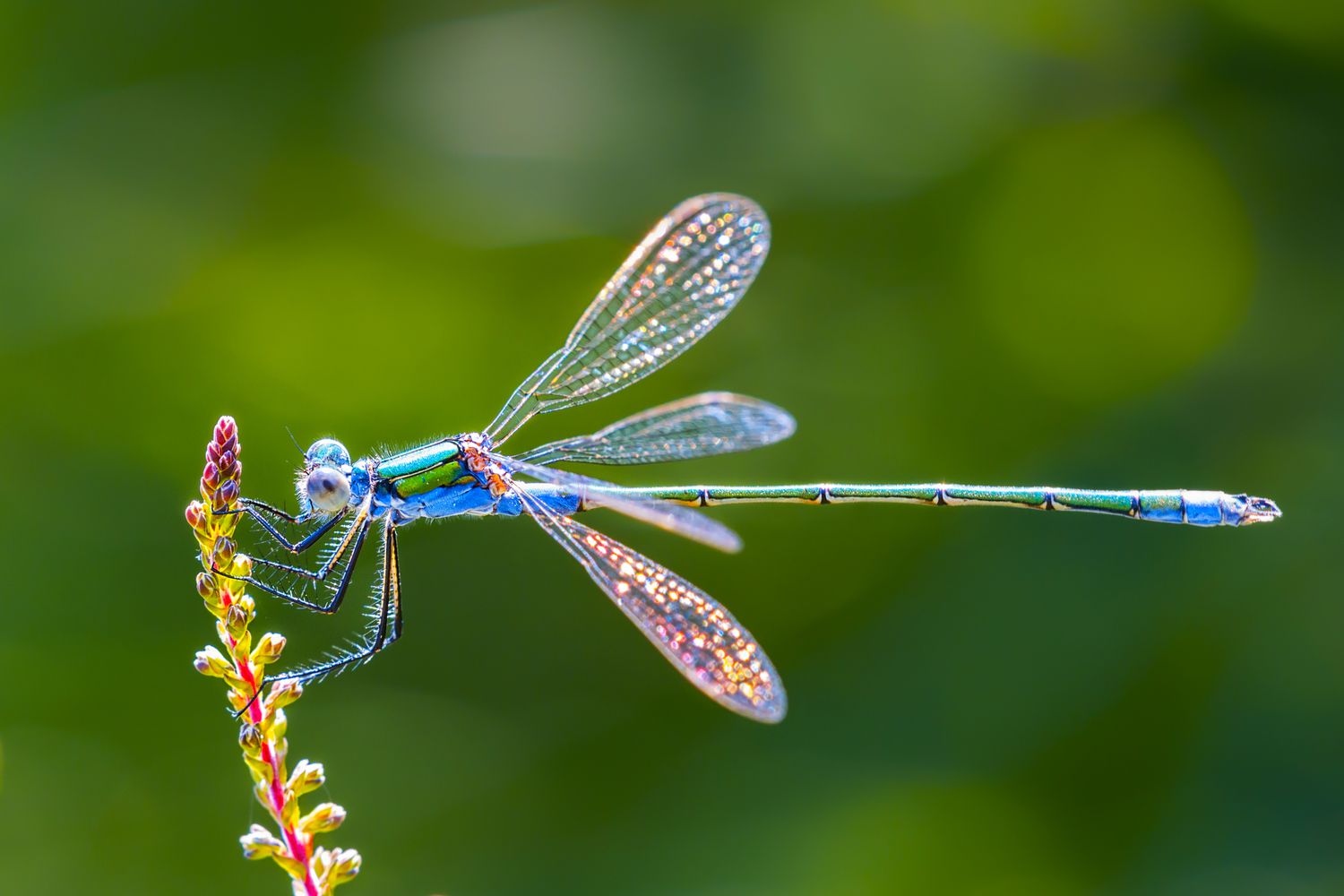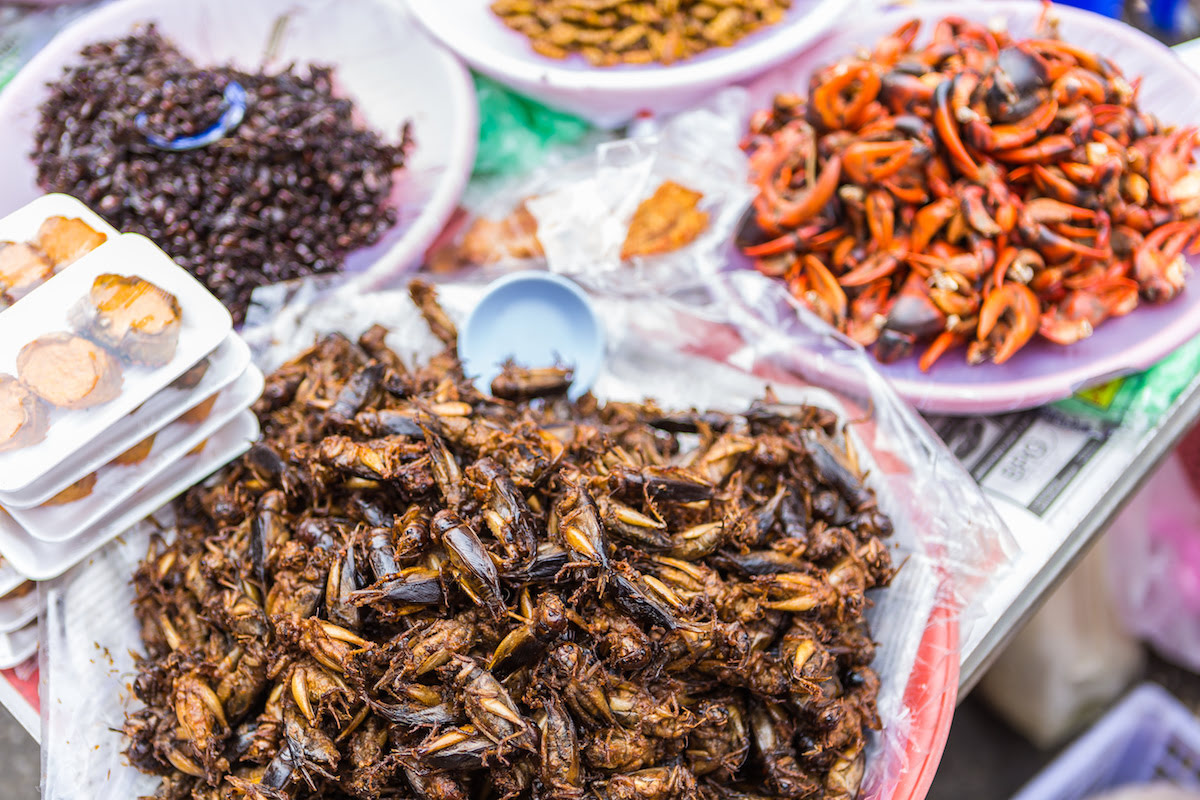Home>Gardening News and Trends>Latest News>What Phobia Is Fear Of Insects
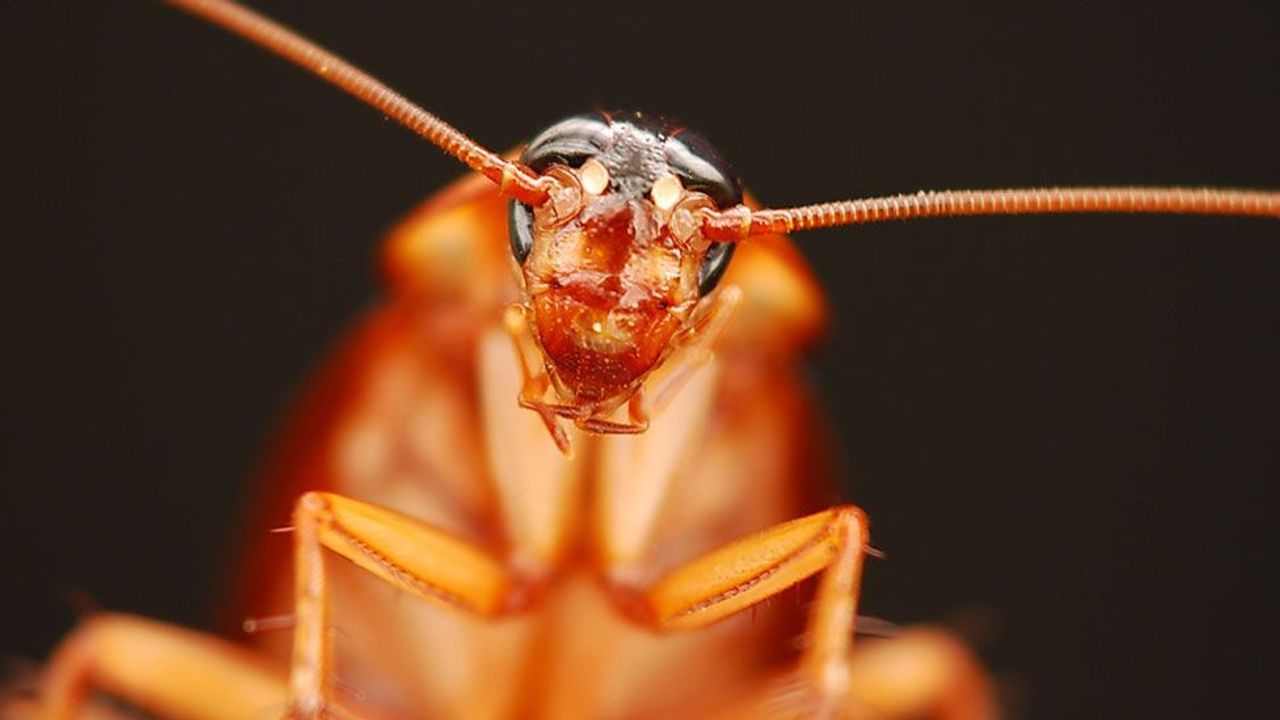

Latest News
What Phobia Is Fear Of Insects
Published: December 9, 2023
Find out what phobia is related to the fear of insects with the latest news on this topic. Stay informed and overcome your fears today!
(Many of the links in this article redirect to a specific reviewed product. Your purchase of these products through affiliate links helps to generate commission for Chicagolandgardening.com, at no extra cost. Learn more)
Table of Contents
Introduction
Welcome to the intriguing world of phobias, where irrational fears can grip individuals and significantly impact their lives. Phobias are characterized by extreme and persistent fears that can often interfere with daily activities and cause distress. From heights to spiders, there seems to be a phobia for just about anything.
Understanding the different types of specific phobias can provide valuable insight into the human psyche and shed light on the complex nature of fear. One such phobia that captivates the imagination is entomophobia – the fear of insects. Whether it’s the creepy crawlies or the buzzing wings that give you the shivers, entomophobia delves into the anxieties that certain insects can induce.
Entomophobia is not a rare occurrence; in fact, it affects a significant number of people worldwide. While some may dismiss it as a trivial fear, entomophobia can be a serious condition that negatively impacts the quality of life for those who experience it. From the fear of being stung by a bee to the disgust of encountering a spider, the range of fears within entomophobia is vast.
This article will delve into the causes, symptoms, and treatment options available for entomophobia. Whether you are curious about the intricacies of this phobia or you personally experience it, this comprehensive guide aims to provide valuable information and support.
So, prepare to dive deep into the world of entomophobia, where the tiniest creatures can provoke the most powerful reactions. Let’s explore the complexities of this phobia and discover ways to cope with the fears that insects evoke!
Understanding Phobias
Phobias, at their core, are intense and persistent fears that can cause significant distress and impairment in daily life. While it is normal to experience fear in certain situations, phobias are characterized by an exaggerated and irrational response. These fears tend to be focused on specific objects, animals, or situations.
Phobias are classified as an anxiety disorder, with specific phobias being one of the most common types. According to the Diagnostic and Statistical Manual of Mental Disorders (DSM-5), specific phobias can be further categorized into five types: animal, natural environment, blood-injection-injury, situational, and other specific phobias.
The development of phobias can be influenced by a combination of genetic, environmental, and psychological factors. For some individuals, there may be a genetic predisposition to anxiety or a history of phobias within their family. Environmental factors, such as traumatic experiences or witnessing others’ fears, can also contribute to the development of phobias.
Psychologically, phobias may arise from a process known as classical conditioning. This occurs when a person associates a particular object or situation with a negative experience or intense fear response. Over time, this association becomes ingrained, and the fear response is triggered even in the absence of an actual threat.
Phobias can have a profound impact on an individual’s life. They can lead to avoidance behaviors, where people go to great lengths to avoid the feared object or situation. This avoidance can disrupt daily routines, limit social interactions, and hinder personal growth and development.
Understanding the nature of phobias is crucial for developing effective strategies to manage and overcome them. By unraveling the complexities of these fears, individuals can gain insight into their own phobias and seek appropriate support and treatment.
Types of Specific Phobias
Specific phobias encompass a wide range of fears that are centered around specific objects, animals, or situations. These fears can vary greatly from person to person, reflecting the diverse nature of human anxieties. Here are five common types of specific phobias:
- Animal Phobias: This category includes fears of specific animals, such as dogs, snakes, spiders, or insects. The fear may stem from a previous negative encounter, a culturally ingrained belief, or simply an aversion to certain animals. Animal phobias are prevalent and can trigger intense panic and anxiety.
- Natural Environment Phobias: Some individuals experience extreme fear and anxiety in response to certain natural environments, such as heights (acrophobia), storms (astraphobia), or water (hydrophobia). These phobias can severely limit an individual’s ability to engage in outdoor activities or visit specific locations.
- Blood-Injection-Injury Phobias: This unique type of phobia involves an intense fear of seeing blood, receiving an injection, or undergoing a medical procedure. Individuals with this phobia may experience physical symptoms such as fainting or dizziness in response to their fears.
- Situational Phobias: Situational phobias are characterized by a fear of specific situations, such as flying (aviophobia), driving (vehophobia), or being in confined spaces (claustrophobia). These phobias can significantly impact an individual’s ability to travel or engage in everyday activities.
- Other Specific Phobias: There are numerous other specific phobias that do not fall into the categories mentioned above. These phobias can range from fears of balloons, clowns, or public speaking to more unusual fears, such as certain textures or specific numbers. Each individual phobia is unique and can cause significant distress to those affected.
It is important to note that specific phobias can manifest differently in each individual. Some individuals may encounter multiple phobias, while others may only experience fear and anxiety in one particular area. The severity of specific phobias can also vary, ranging from mild uneasiness to debilitating panic attacks.
Recognizing the different types of specific phobias can help individuals identify and seek appropriate support for their fears. Understanding that these phobias are common and treatable can empower individuals to overcome their anxieties and regain control of their lives.
What is Entomophobia?
Entomophobia, also known as insectophobia, is a specific phobia characterized by an intense and irrational fear of insects. It goes beyond a simple dislike or aversion to bugs and can cause severe anxiety and distress in those who experience it.
Individuals with entomophobia may be terrified of various types of insects, including ants, bees, spiders, cockroaches, or any other creepy-crawly creatures. The fear can stem from a variety of reasons, such as a traumatic experience, negative childhood associations, or cultural influences.
The fear of insects can manifest differently from person to person. Some individuals may experience a general fear and discomfort when in the presence of insects, while others may go to extreme lengths to avoid any contact or even the thought of insects. This avoidance can lead to significant disruptions in daily life and limit social activities.
Entomophobia can also be accompanied by physical symptoms, such as rapid heartbeat, shortness of breath, sweating, trembling, or even panic attacks. The fear associated with entomophobia is often disproportionate to the actual threat posed by the insects, making it a classic example of an irrational phobia.
It is important to understand that entomophobia is a real and valid fear that can have a profound impact on an individual’s life. Those who suffer from entomophobia may experience significant distress and impairment as they navigate their daily routines.
While entomophobia may seem challenging to overcome, there are effective treatments available. With the help of professionals, individuals can learn coping mechanisms and gradually reduce their fear and anxiety towards insects through therapy techniques, such as exposure therapy or cognitive-behavioral therapy. These therapies can help individuals reframe their thoughts, challenge their fears, and develop healthier responses to insects.
Recognizing that entomophobia is a common fear and seeking support can empower individuals to confront their phobia and live a more fulfilling life free from the shackles of irrational fear.
Causes of Entomophobia
The development of entomophobia, like other phobias, is complex and can be influenced by a variety of factors. While it’s not always possible to pinpoint a single cause, here are some common factors that may contribute to the development of entomophobia:
1. Traumatic Experience: A traumatic encounter with insects, such as being stung by a bee or bitten by a spider, can leave a lasting impact on an individual’s psyche. This negative experience can create a deep-rooted fear and anxiety towards insects, leading to entomophobia.
2. Learned Behavior: Entomophobia can be a learned behavior, where individuals develop a fear of insects by witnessing the extreme reactions or fears of others, such as family members or friends. Seeing others’ distress or hearing stories about dangerous encounters with insects can instill a sense of fear and caution.
3. Cultural Influence: Cultural beliefs and attitudes towards insects can also shape the development of entomophobia. In some cultures, insects may be associated with danger, disease, or superstitions, leading individuals to develop a heightened fear and aversion towards them.
4. Biological Factors: Some researchers believe that there may be a biological component to entomophobia. Certain individuals may be biologically predisposed to heightened levels of anxiety or fear responses, making them more susceptible to developing an intense fear of insects.
5. Environmental Factors: The environment in which an individual grows up can play a role in the development of entomophobia. Exposure to insects in childhood, especially if it includes negative interactions or traumatic experiences, can contribute to the fear and anxiety that persists into adulthood.
It’s important to note that entomophobia can develop in individuals with no prior traumatic experiences or genetic predispositions. The specific causes may vary from person to person, and oftentimes, it can be a combination of multiple factors that contribute to the development of this phobia.
Understanding the causes of entomophobia can provide insight into the origins of the fear, but seeking professional help is crucial for effectively managing and overcoming the phobia. Therapists and counselors experienced in treating specific phobias can help individuals explore the underlying causes and develop strategies to cope with their fear of insects.
Symptoms of Entomophobia
Entomophobia, or the fear of insects, can evoke a range of emotional, physical, and psychological symptoms in those who experience it. These symptoms can vary in intensity and may manifest differently from person to person. Here are some common symptoms associated with entomophobia:
1. Intense Fear and Anxiety: The primary symptom of entomophobia is an overwhelming fear and anxiety when confronted with insects. This fear is often disproportionate to the actual threat posed by the insects and can trigger a strong emotional response.
2. Panic Attacks: Individuals with entomophobia may experience panic attacks when they encounter or even think about insects. Panic attacks can include symptoms such as a racing heartbeat, shortness of breath, trembling, sweating, and a sense of impending doom.
3. Avoidance Behavior: The fear and anxiety generated by entomophobia can lead individuals to adopt avoidance behaviors. This may involve actively avoiding places where insects may be present or going to great lengths to ensure they are never in close proximity to insects.
4. Physical Symptoms: Entomophobia can also manifest through physical symptoms, including nausea, dizziness, sweating, trembling, chest pain, and difficulty breathing. These physical symptoms can accompany the fear and anxiety associated with insects.
5. Hypervigilance: Individuals with entomophobia may constantly be on high alert, scanning their surroundings for any signs of insects. This hypervigilance can lead to increased stress levels and a constant state of anxiety.
6. Disrupted Daily Life: Entomophobia can significantly disrupt an individual’s daily life and routines. The fear of encountering insects can limit social activities, outdoor excursions, and even impact work or school performance.
7. Emotional Distress: The fear and anxiety associated with entomophobia can cause emotional distress, ranging from feelings of helplessness and embarrassment to a sense of loss of control over one’s life.
It’s important to remember that the symptoms of entomophobia can vary in severity and may not be limited to the ones mentioned above. Each individual may experience the phobia differently and exhibit a unique set of symptoms.
If you or someone you know is experiencing significant distress or impairment due to an extreme fear of insects, seeking professional help is recommended. Therapists and counselors can provide appropriate interventions and techniques to help manage and overcome entomophobia, enabling individuals to live a fuller and more empowered life.
Treatment for Entomophobia
While entomophobia, or the fear of insects, can be debilitating, the good news is that it is a treatable condition. There are various approaches and techniques that can help individuals effectively manage and overcome their fear. Here are some common treatment options for entomophobia:
1. Cognitive-Behavioral Therapy (CBT): CBT is a widely used therapeutic approach for treating phobias, including entomophobia. This type of therapy helps individuals identify and challenge negative thoughts and beliefs about insects. Through gradual exposure to insects in a controlled and safe environment, individuals can develop new coping strategies and reduce anxiety responses.
2. Exposure Therapy: Exposure therapy involves gradually exposing individuals to their fear of insects in a controlled manner. This can be done through visual exposure (pictures or videos of insects), virtual reality simulations, or eventually real-life encounters with insects. Exposure therapy helps desensitize individuals to the fear and allows them to build confidence in facing their phobia.
3. Relaxation Techniques: Learning relaxation techniques, such as deep breathing exercises, progressive muscle relaxation, or mindfulness meditation, can help individuals manage anxiety and reduce the physical symptoms associated with entomophobia. These techniques can be practiced both during therapy sessions and in everyday life to alleviate fear and promote a sense of calm.
4. Medication: In some cases, medication may be prescribed to help manage the symptoms of entomophobia. Anti-anxiety medications or beta-blockers can be used to reduce anxiety and physical symptoms associated with the fear of insects. However, medication is usually used in conjunction with therapy and is not a stand-alone treatment.
5. Support Groups: Joining support groups or participating in group therapy sessions can provide individuals with a sense of community and understanding. Interacting with others who have similar experiences can offer valuable support, sharing of coping strategies, and the opportunity to learn from others’ experiences.
6. Self-Help Techniques: Utilizing self-help techniques, such as self-education about insects, practicing relaxation exercises, and gradually exposing oneself to insects in a controlled manner, can be effective in managing and reducing fear over time. However, self-help techniques should be done in conjunction with professional guidance.
It’s essential to remember that treatment for entomophobia should be tailored to the individual and their specific needs. Working with a qualified therapist or counselor experienced in treating phobias can help create an individualized treatment plan that addresses personal fears, goals, and challenges.
Seeking professional help and taking proactive steps towards treatment can empower individuals to overcome their fear of insects and regain control of their lives, leading to increased confidence and a sense of freedom from the limitations imposed by entomophobia.
Challenges in Overcoming Entomophobia
Overcoming entomophobia, like any phobia, can present various challenges throughout the healing process. These challenges can vary from person to person, but some common obstacles may arise when addressing and conquering the fear of insects. Understanding these challenges can help individuals approach their journey to recovery with patience and perseverance. Here are some common challenges in overcoming entomophobia:
1. Intense Anxiety Responses: The fear of insects often triggers intense anxiety responses, making it difficult for individuals to confront their fear directly. Panic attacks or heightened anxiety levels can make the process of exposure therapy or confronting insects in real-life situations emotionally challenging.
2. Avoidance Behaviors: Many individuals with entomophobia develop avoidance behaviors in an effort to protect themselves from their fears. These avoidance behaviors can range from not going outside in certain environments to always ensuring their homes are insect-free. Overcoming these behaviors requires a willingness to confront the fear head-on.
3. Deep-Seated Beliefs: Entomophobia is often fueled by deep-seated beliefs and negative thoughts about insects. These beliefs may be based on cultural influences, past experiences, or irrational interpretations of insects’ potential threats. Challenging and reframing these beliefs is a key aspect of treatment, but it can be a challenging process that requires self-reflection and openness to change.
4. Fear Generalization: Some individuals with entomophobia may generalize their fear of one type of insect to all insects. This fear generalization can lead to heightened anxiety and avoidance of any insect encounter. Addressing this challenge involves gradually exposing oneself to different insects and differentiating between their specific fears.
5. Relapse and Setbacks: It is not uncommon for individuals in the process of overcoming entomophobia to experience relapses or setbacks. This can occur when faced with particularly challenging situations or after a period of progress. It’s important to remember that setbacks are a natural part of the healing process and should be viewed as opportunities for growth and learning rather than as failures.
6. Support System and Stigma: The support system surrounding individuals with entomophobia can greatly impact their ability to overcome their fears. Unfortunately, there may be a lack of understanding or stigma attached to phobias, including entomophobia. Building a supportive network of friends, family, and professionals who understand and empathize with the challenges of entomophobia is crucial for success.
Despite these challenges, it’s important to remember that overcoming entomophobia is possible with the right mindset, professional guidance, and support. With patience, determination, and a commitment to self-improvement, individuals can gradually build their resilience and conquer their fear of insects, leading to a more fulfilling and liberated life.
Coping Strategies for Dealing with Insects
Coping with entomophobia, or the fear of insects, involves developing effective strategies to manage anxiety and navigate encounters with insects. While professional treatment is essential for overcoming the fear, there are also coping strategies that individuals can practice in their everyday lives. Here are some helpful techniques for dealing with insects:
1. Education and Knowledge: Learning more about insects can help demystify them and reduce irrational fears. Understanding their behavior, life cycles, and ecological roles can provide a sense of control and dispel misconceptions.
2. Gradual Exposure: Gradual exposure to insects can help desensitize individuals to their fears. Start with pictures or videos of insects, then gradually progress to observing insects from a distance, and eventually consider interacting with them in a controlled and safe environment.
3. Breathing and Relaxation Techniques: Practicing deep breathing exercises, progressive muscle relaxation, or mindfulness techniques can help manage anxiety when encountering insects. These techniques can promote calmness and reduce the physical symptoms of fear.
4. Positive Self-Talk: Replace negative thoughts and fears with positive affirmations and rational thinking. Remind yourself that most insects are harmless and play important roles in the ecosystem. Challenge irrational beliefs and thoughts related to insects with evidence-based logic.
5. Create a Safe Space: Designate certain areas or rooms in your home as “insect-free zones” to create a sense of security. Keep windows and doors closed or install screens to prevent insects from entering these spaces. This can provide a refuge for moments when you need to feel safe from insect encounters.
6. Seek Support: Surround yourself with understanding and supportive individuals who can provide encouragement and empathy. Share your fears and experiences with trusted friends, family, or support groups who can offer guidance and reassurance.
7. Prepare in Advance: If you anticipate encountering insects in certain situations, prepare yourself mentally and emotionally. Visualize yourself handling the situation calmly and successfully. By mentally rehearsing the experience, you can feel more confident and in control.
8. Professional Help: Consider seeking professional help from therapists or counselors experienced in treating specific phobias. They can provide guidance, support, and techniques tailored to your specific needs and help you work through your fear of insects.
Remember, coping strategies may vary from person to person, so it’s important to find what works best for you. Be patient with yourself and celebrate even the smallest victories along the way. With time, effort, and a proactive approach, you can develop the skills and resilience needed to cope with and conquer your fear of insects.
Conclusion
Entomophobia, the fear of insects, is a specific phobia that can significantly impact an individual’s life. Whether it is the fear of being stung, the disgust of encountering a spider, or the anxiety of a buzzing sound, entomophobia can evoke intense emotions and anxiety responses. However, it is important to remember that entomophobia is a treatable condition, and individuals can take proactive steps to manage and overcome their fear.
Understanding the origins and causes of entomophobia is crucial for developing effective treatment strategies. Traumatic experiences, learned behaviors, cultural influences, and biological factors can all contribute to the development of this phobia. Recognizing and addressing these factors is the first step towards healing and recovery.
Various treatment options, such as cognitive-behavioral therapy, exposure therapy, and relaxation techniques, offer individuals the necessary tools to manage their fear. Seeking professional help from therapists and counselors experienced in treating phobias can provide invaluable support and guidance throughout the healing process.
It is also important to acknowledge the challenges individuals may face when confronting entomophobia, including intense anxiety responses, avoidance behaviors, deep-seated beliefs, fear generalization, relapses, and potential stigma. These challenges require patience, determination, and a supportive network to overcome.
However, coping strategies, such as education, gradual exposure, relaxation techniques, positive self-talk, creating safe spaces, seeking support, and preparing in advance, can help individuals navigate encounters with insects and manage anxiety on a day-to-day basis.
By implementing these coping strategies and seeking professional guidance when needed, individuals can gradually build their resilience, regain control over their lives, and free themselves from the limitations imposed by entomophobia.
Remember, every step taken towards overcoming entomophobia is a triumph. Embrace the journey with patience, self-compassion, and a belief in your own ability to conquer your fear. You have within you the strength to face your fear of insects and to live a life that is not controlled by irrational anxieties.
